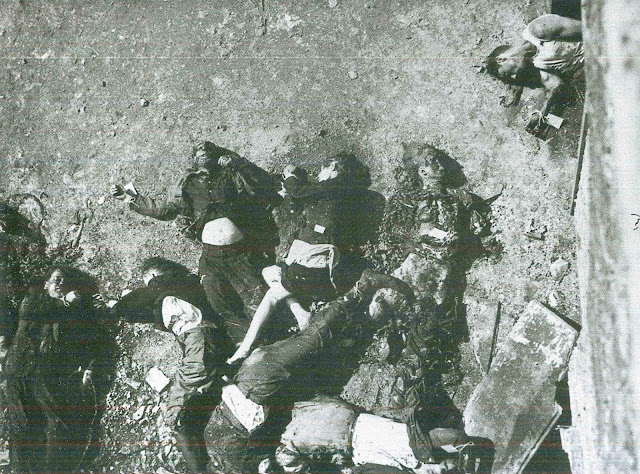In the liberation of Paris, eleven hostage Parisian civilians were shot to death in the Romanville fortress and their exsanguinated bodies were scattered. The period of the liberation of Paris was littered with all the dead or mowed down by bullets lost in battle, and the last victims of the vengeance of the Nazi German army. Resistance fighters slaughtered at the Château de Vincennes, at Fort Romainville in Luxembourg, about 35 young men whose average age did not exceed 17, became victims of the French Resistance. They were executed on the spot near a waterfall in the Boulogne Forest. Before the battle was completely over, a disastrous sweep by the Nazi German army began. It prioritized civilian soldiers, collaborators, and resistance collaborators for execution. However, on the evening of Saturday, August 26, ordinary Parisians fell asleep with the assurance that tomorrow would surely sing.
Eleven hostage Parisian civilians in the Liberation of Paris were shot to death in the Fortress of Romanville and their exsanguinated bodies were scattered around. The period of the liberation of Paris was littered with all the dead or mowed down by bullets lost in battle, and the last victims of the vengeance of the Nazi German army. Resistance fighters slaughtered at the Château de Vincennes, at Fort Romainville in Luxembourg, about 35 young men whose average age did not exceed 17, became victims of the French Resistance. They were executed on the spot near a waterfall in the Boulogne Forest. Before the battle was completely over, a disastrous sweep by the Nazi German army began. It prioritized civilian soldiers, collaborators, and resistance collaborators for execution. However, on the evening of Saturday, August 26, ordinary Parisians fell asleep, reassured that tomorrow would surely sing.
With the invasion of Nazi Germany, Paris fell and surrendered on June 14, 1940. After more than four years of occupation, Paris was liberated by French and American troops on August 25, 1944. The Nazi German commander, Reza, defied Hitler's orders to blow up key Parisian sites and burn the city to the ground before liberating it; he signed a formal surrender on August 26, and American troops marched down the Champs-Elysées on August 26.
Paris fell when German troops suddenly stormed France starting on June 14, 1940; on June 22, France signed an armistice with the Germans and a French puppet state was established with its capital in Vichy. Elsewhere, however, General Charles de Gaulle's Free France continued to fight, and a resistance emerged in occupied France to resist the Nazis and the Vichy regime's rule.
French forces were established in London in late 1943 to lead the liberation of Paris during the Allied invasion of France. they arrived in Normandy in August 1944 and joined the American military forces. by August 18, Allied forces were near Paris and resistance fighters emerged from hiding to attack the Germans and the By August 18, Allied troops were near Paris and resistance fighters emerged from hiding to attack German troops and fortresses, and workers in Paris went on strike.
On August 23, 1944, Allied forces invaded Paris from the north and from the south. Meanwhile, in Paris, Nazi German troops were fighting the resistance and completing the defense of the entire city of Paris. Hitler ordered Paris to be defended to the end and demanded that Paris be a field of ruins and that the Allies not be allowed to cross the original Paris. He began faithfully placing explosives under many of Paris' bridges and its landmarks, but defied orders to detonate and begin the destruction. They were not about to destroy Europe's most famous city, the City of Light.
American troops encountered the heavy artillery of the Nazi Germans and suffered many casualties. on August 24, they crossed the Seine River and reached the outskirts of Paris. There, the Allied forces were greeted with flowers, kisses, and wine by the frenzied civilian Parisians who surrounded them. More Allied troops invaded, and just before midnight on August 24, American troops captured Hôtel-de-Ville in the heart of Paris.
On the morning of August 25, American troops swept through the western and eastern parts of Paris, and the city was liberated.
In the afternoon of August 25, the German commander was arrested by French troops at his headquarters in Paris. Shortly thereafter, he formally surrendered Paris to de Gaulle's provisional government and signed the document. De Gaulle himself arrived on the streets of Paris in the late afternoon of August 25. on August 26, de Gaulle and the French troops led a victorious liberation march down the Champs-Elysées. Sporadic gunfire from rooftops interrupted the parade, but the snipers were never identified.

